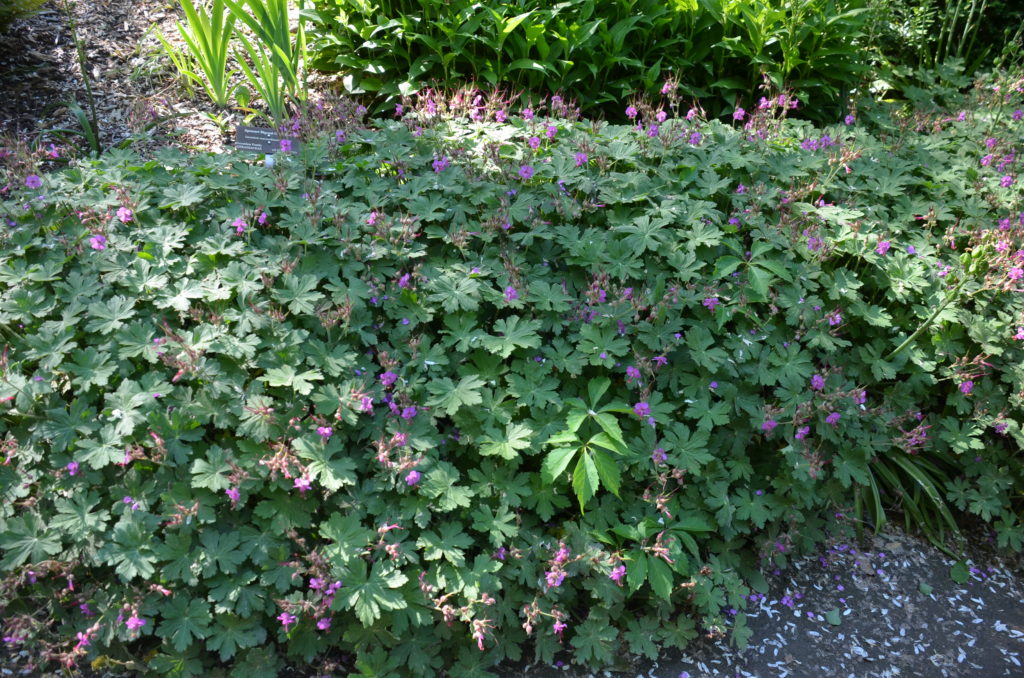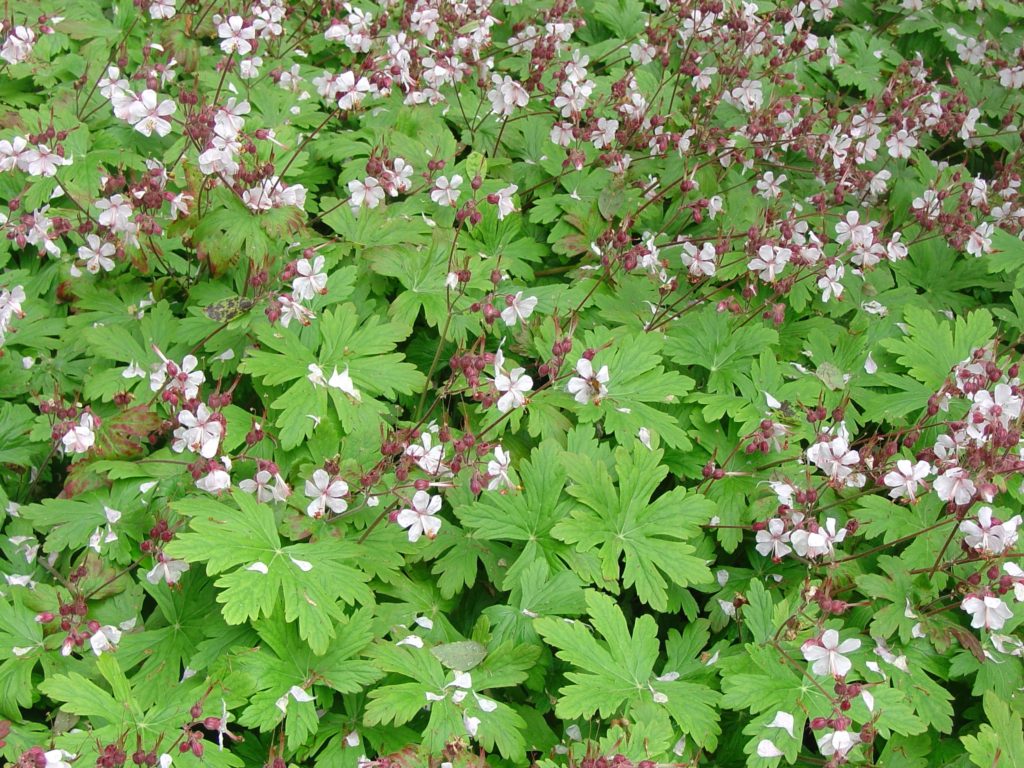
Bigroot Cranesbill (Geranium macrorrhizum) is a favorite, easy to grow plant that forms a dense weed-resistant ground cover with attractive foliage and flowers. (USDA zones 4 – 8). This “cranesbill” is a true perennial geranium. It is a rhizomatous semi-evergreen perennial, native to southern Europe, typically grows to 12 inches tall and to 24 inches or more in spread. The rounded grayish-green leaves (4-8 inches long) have 5-7 deeply cut lobes. Leaves are strongly aromatic when crushed. Over the years this slow-growing cranesbill species develops into an attractive vegetative patch that asks for little maintenance.
Three varieties – ‘Ingwersen’s Variety’, ‘Bevan’s Variety’ and ‘Spessart’ – are commonly available at garden centers. ‘Bevan’s Variety’ grows to slightly more than a foot tall and bears magenta-pink flowers that are uniquely veined; ‘Ingwersen’s Variety’ bears pale pink flowers on dark red stems; ‘Spessart’ has white (soft pink) flowers on and off through the summer months. Blooms stand above the foliage, often with some re-blooming in late summer into autumn.

Bigroot cranesbills grow in full sun to partial shade and in average well-drained soil. Plants tolerate full sun in northerly cool areas; otherwise, they tolerate hot humid summers and dry shade better than most other cranesbill species. Plants do not need to be cut back or sheared after flowering. If you demand a tidy look, the taller flowering stems may be mowed back, leaving a rough appearance for maybe 7-10 days. Plants spread in the garden by rhizomes and occasionally self-seed. Clumps may be divided to expand the ground bed faster.
Site this low ground cover at the front of planting borders or edge large urns and planters utilizing this cranesbill and others. Deer and rabbits leave cranesbills alone and the bees work their small saucer-like blooms. Leaves acquire red tones in autumn and stand out more in unseasonably dry weather.

 Posted in
Posted in 
